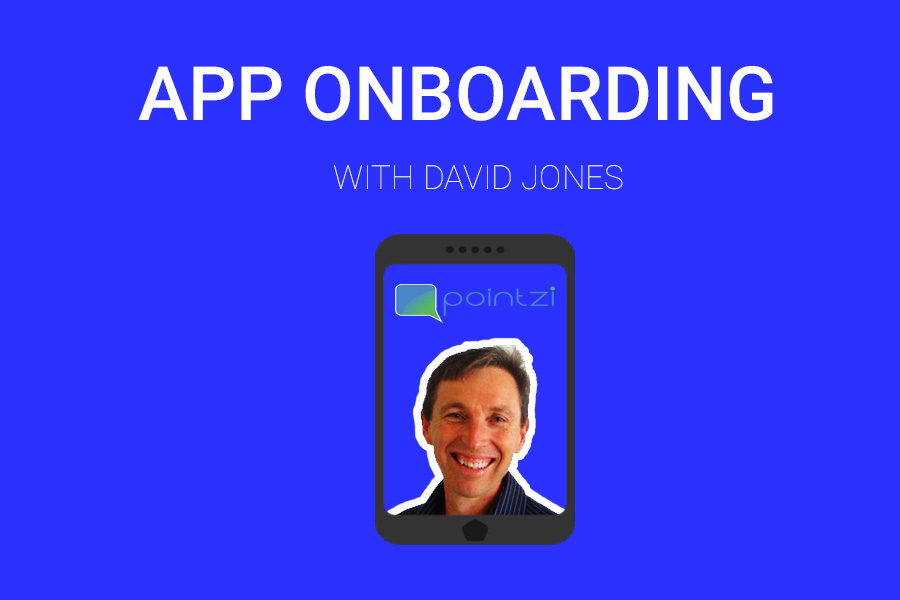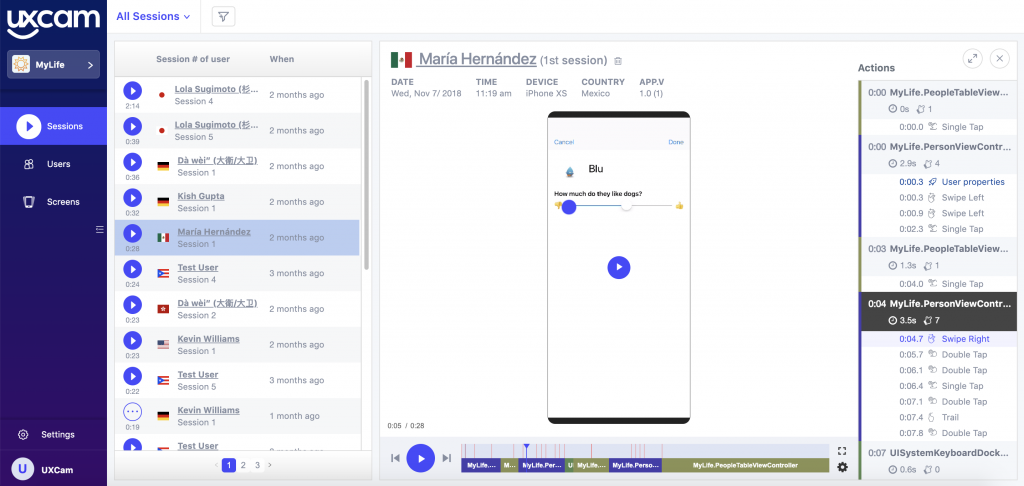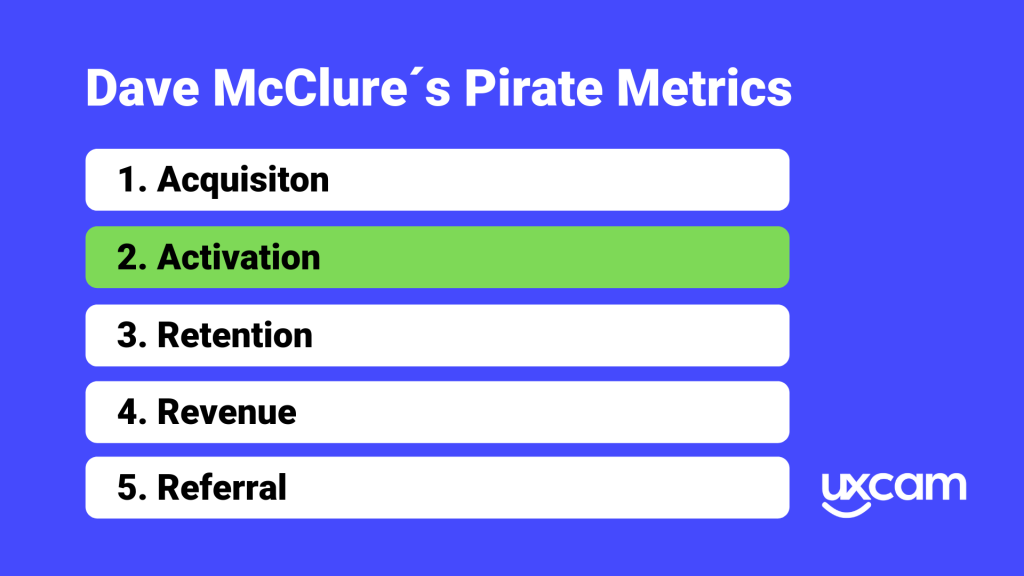Back to blog
5 MIN READ
4 Actionable Tips on App Onboarding by David Jones
PUBLISHED
16 November, 2019

Product Analytics Expert

Are you happy with the onboarding of your app?
Yes? No? Maybe?
Whatever the answer is, you should listen to what David Jones has to say about the topic.
Here is why: David has founded three start-ups in his lifetime, his first one exited with over 1B Australian Dollars earlier this year.
His latest company, Pointzi, seeks to improve the onboarding of mobile and web apps. It does so by letting you experiment with your app onboarding, without having to implement any code.
To sum it up: David knows app onboarding.
Here are the 4 secrets about app onboarding that David shared in a recent conversation with me.
Tip 1: Experiment with your app onboarding
When asked how David came up with the idea of Pointzi, he said:
“This came from doing our own apps.
What is the difference between showing something and not showing it?
Being actually able to do that without code, being able to do that without an app release, being able to do that and see where the uplift is, being able to do split tests. These are four really important points.
We realized that trying to hardcode, we weren’t really getting ahead of the game, we couldn’t actually experiment enough.”
Whether you want to hardcode or not, you should use this advice and experiment with your onboarding process.
Speaking from UXCam´s experience, we do this ourselves. This is what the onboarding process for our mobile SDK looks like right now:


The aha-moment after the integration: Session Replay Analysis
An intuitive step by step process, right?
Well, what you don’t see are the dozens of onboarding versions that UXCam had before this, which were slightly less intuitive.
It is only thanks to the constant experimenting and customer discussions that we have the current version – and we are still expanding on this by experimenting even more.
Tip 2: Think of app onboarding as the step of activation
Here is what David has to say about this:
“We think of onboarding as the step of activation, getting the user to the AHA moment.
That means actually moving them to the stage where they find the value of your product quickly or at least understand the value of the product.
That is the purest form of onboarding, in which you literally got 30 seconds on a mobile app and maybe 3 minutes on a desktop app. It is a very short time on mobile.”
David is referring to the Pirate Metrics of Dave McClure here.
What´s this? Let’s take a look:


The Pirate Metrics are designed for Product Managers and describe how the customer lifecycle should ideally look like:
1. Acquisition: Users come to the site from various channels2. Activation: Users enjoy the 1st visit 3. Retention: Users come back4. Revenue: Users conduct monetization behavior5. Referral: Users like the product enough to refer others
The first letters of these metrics spell AARRR, which explains the name “Pirate Metrics”
Now let’s go back to onboarding. If the users don´t get activated, you can forget about retention, revenue, and referral.
Think about what activation means for your app. At what stage is a user fully activated
Which brings me to tip 3.
Tip 3: You might have a different agenda than your user
“A lot of people will say I hardcode the onboarding for my app. And I think that’s absolutely the right thing to do.
If you are a single purpose application and you want to actually get the user to engage with your app then I think you should absolutely code that.
But if you want to try something else, for example, if you want to experiment with incentives to complete the users’ profile, then it is a secondary thing to the user.
You want users to complete their profile, but they just want to search, for example, for real estate.
A lot of people are asking, well, why would I use an engagement layer and that’s really that extra complexity. You got to sort through the different agendas, your agenda, and the users’ agenda.”
When building your app, it is important to acknowledge that what you want might be slightly different than what your user wants.
In the example of David, you might want your user to complete their profile so that you can send more personalized marketing campaigns.
The value is not obvious for the user, so it is crucial to guide them to the places that are important for you.
Tip 4: Questions you should ask yourself
Pointzi works with enterprise customers and offers them a program to guide them through set up the onboarding. Here are questions that David asks them:
“What are your KPIs (Key Performance Indicator), what are your OKRs (Objectives and Key Results) and how does that match the onboarding stage?
What is an activation to you? What is that AHA moment?
What is the best way to measure that?”
It is important to know what your onboarding goal is.
For example, for us at UXCam, the user is activated once he has integrated UXCam in the app and sees his first sessions (this is when the AHA-moment happens for our users). Until then, he is still part of the onboarding process.
What is the AHA-moment for your app? How can you measure it?
By asking yourself these questions, you already are coming one step closer to achieving your onboarding goals.
Conclusion:
The key learnings about app onboarding:
#1: Experiment with your onboarding
#2: Think of onboarding as the step of activation
#3: You have a different agenda than your user
#4: What is an activation to you? What is that AHA moment?
You can follow David on LinkedIn and Twitter.
If you want to find out how you can deliver the best app experience, check out UXCam!
AUTHOR

Jonas Kurzweg
Product Analytics Expert
UX, marketing & product nerd. Coffee enthusiast. Working at UXCam.
What’s UXCam?
Related articles
Product best practices
App Onboarding Guide: Top 10 Onboarding Flow Examples 2025
Take a look at 10 examples of mobile apps that get user onboarding flows right. Get inspired by proven app onboarding approaches and improve your...

Jonas Kurzweg
Product Analytics Expert
User Onboarding
7 SaaS Onboarding Best Practices to Boost Retention
Boost SaaS retention with 7 proven onboarding strategies. Learn how to personalize, streamline, and guide new users to value faster using real behavior...

Gianluca Ferruggia
Product best practices
How to Increase Mobile App Engagement (10 Key Strategies)
Discover the top strategies for increasing mobile app engagement and user retention. From push notifications to app gamification, our expert tips will help you boost...

Tope Longe
Product Analytics Expert
